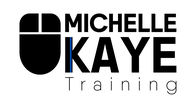Let’s get this right from the beginning – the table of contents (or TOC) is a list that appears at the beginning of a document which shows you the headings/chapters of the file and their page numbers.
Most people think that this is difficult to set up and I’m happy to say they have got it so wrong!
Creating a TOC in Word is one of the easiest things to do (I can’t really say the same about an index but we’re not talking about those today 😉).
Preparing the Document
The first step (after writing the document) is to set it up.
The TOC is simple because it’s based on heading styles.
Note: Now that you know, you can apply the styles as you create the document.
As they are built-in styles, all you need to do is decide what level your heading is, and apply the style from Heading 1 to Heading 9. The default styles are normally 1-3, but it’s easy to find the additional levels.
The heading styles match to what level in the TOC it is.

Work through the whole document; apply the relevant heading styles to the titles that you’ve already typed in.
Creating the table of contents
Now, it’s time to create the TOC.
Many of our documents are now digital (emailed or linked). We need to make space for the TOC at the beginning – where it belongs.
Positioning your table of contents
Have you created a title page? Or did you just start typing the document?
(You just started typing – didn’t you?)
We need to set it up a little bit, so let’s go back to the beginning of the page of the document.
Type in a heading for the title page and then we need a new page but let’s put a new page section break.
This means that you can choose if you want the page numbers to start at the TOC; or if you want to numbering where your document starts.
The document needs to start on it’s own page, insert another next page section.
Let’s go back up to blank second page where we going to add the TOC.
Next question do you want it to have it’s own title? “Table of Contents” or “Contents” – type it in now.
Pro Tip – TOC
Don’t apply a heading style!
If you do that it’s going to become part of the table of contents and we don’t need that! There are other styles that you can use or you can copy the formatting of the relevant heading style just don’t use the style itself.
Okay everything is ready we can look at the table of contents.
Creating a table of contents
Select the references tab, on the ribbon. As soon as you click on it you’ll see the first options is table of contents.

Click the option to see that there are two choices:
- Built-in Tables
- Custom Table of Contents
Built-In
Choose one of the default styles that are available to you.
The TOC is created immediately, using the style that you selected.
Custom
If you want to have a little bit more control over things, create a custom version.
In the dialog box, select the options to create a TOC.
From here the table of contents is automatically created.
One thing I forgot to mention you need your mouse cursor needs to be positioned where you want the table of contents to appear.
Updating the Contents
Now that you’ve got a table of contents, here are couple of useful tips for you.
1) If you need to change the level of something – go and change it in the text. Simply change the style to another heading level.
Note: You’ve actually got nine levels, I don’t recommend using all of them in the TOC. Generally the standard limit is 4 headings (and styles), although many TOC’s use 1-3.
2) As you’re editing your document, things will change and this can have an effect on the page numbers. Remember to update the TOC.
Next Steps
If you want to learn more, then Book a Call with me.
Related Posts
- How to use AutoText in WordThere are times when you need a bit more information, or a bit more formatting and quite frankly AutoComplete just doesn’t cut it so let me introduce you to its “big brother” AutoText. Here’s where you can put any amount of text, images, formatting, whatever you want into a single “shortcut” that will let you… Read more: How to use AutoText in Word
- Best Practices for AutoFormat in Word and DocsHave you ever noticed that there are times when you type something in and it changes? That the symbol or punctuation doesn’t look exactly as you planned. It’s probably the autoformat options. You can find these options in both Microsoft and Google. Let’s take a closer look. Google Docs As we’ve seen in other posts,… Read more: Best Practices for AutoFormat in Word and Docs
- What online word processor is best for you?Are you trying to decide between the two main online word processors, Microsoft Word and Google Docs? Here’s a guide to help you choose which one can best fit your needs.
- Do you make the most out of AutoCorrect?Learn how to make the most out of AutoCorrect and Substitutions in Microsoft Word and Google Docs, including timesaving tips and tricks.
- How to deal with the tracked changes?Unsure how to handle tracked changes in your Microsoft Word or Google Docs document? Here are simple instructions on how to accept or reject changes.






